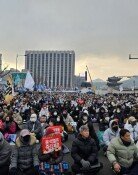Unexpected Rise in Interest Rates
The Korean version of the New Deal policy, which aims to boost investment by attracting private capital, is on the rocks as interest rates recently have surged.
The financial burden of the investment plan has increased because of the rise in interest rates. Originally, the plan was expected to guarantee higher profit rates than interest rates in the market to private corporations, which invest in building public facilities such as care centers for the elderly and apartments for soldiers from June this year.
Against this backdrop, the government is considering the deduction of the plan as it scales back the specific projects of the comprehensive investment plan.
Park Byung-won, the deputy vice minister of Finance and Economy, said on February 16, It is true that the government is uncomfortable because interest rates respond too quickly to the market, and added, The comprehensive investment plan could be adjusted in accordance with the economic situation and interest rates since the plan is a part of the economy-boosting policies.
The financial cost of the plan increases by 100 billion won per every one percent rise in interest rates. The Ministry of Finance and Economy decided to invest in welfare and education facilities by drawing eight to 10 trillion won from private sectors during the second half of this year. The ministry believed that its measure would create an effect to boost the construction industry, reflecting the trend of low interest rates, while not overloading the government.
However, the financial burden will inevitably grow as market interest rates have soared this year.
The financial cost of 10 trillion won increases by 100 billion won only in arithmetic terms when interest rates increase by one percent annually. If the increased rates were kept on hold, such amounts of financial cost would be annually accumulated.
In effect, the interest rate of three-year national bonds, the benchmark of market interest rates, was 3.28 percent at the end of last year but recorded 4.06 percent at the end of January and surged to 4.46 percent on February 11.
Interest rates have slightly dropped to 4.31 percent as the Financial Monetary Committee announced that it would freeze the call rate on February 15, but it is hard to eliminate the passivity of an additional increase in the rates.
Yoo Byung-gyu, the director of the economic department at Hyundai Research Institute, pointed out, Public businesses being conducted under the comprehensive investment plan usually find it hard to generate profits with their normal operations, so if interest rates increase, financial problems are expected to occur because the government has to deal with additional cost.
Why are interest rates increasing? The main reason is that the government has raised the amount of national bond issuance at a time for the early implementation of government spending in the first half of this year. The prices of bonds have plunged (meaning an increase in interest rates of bonds) as financial securities amounting to five trillion won were released in the market in February followed by national bond issuance of eight trillion won in January. In line with that, the expectation of recovery of domestic consumption also helped the increase.
Experts forecast that the rise in interest rates will continue.
Kwon Kyoung-eup, director of the bond management division at Daehan Investment Trust Management Corporation, predicted, The phenomenon of rising interest rates has temporarily stalled as the Financial Monetary Committee kept the call rate on hold, but the rates will not fall below the four percent mark because of the expectation of an increase in interest rates in the market.
Chang-Won Kim changkim@donga.com
Headline News
- Joint investigation headquarters asks Yoon to appear at the investigation office
- KDIC colonel: Cable ties and hoods to control NEC staff were prepared
- Results of real estate development diverged by accessibility to Gangnam
- New budget proposal reflecting Trump’s demand rejected
- Son Heung-min scores winning corner kick







